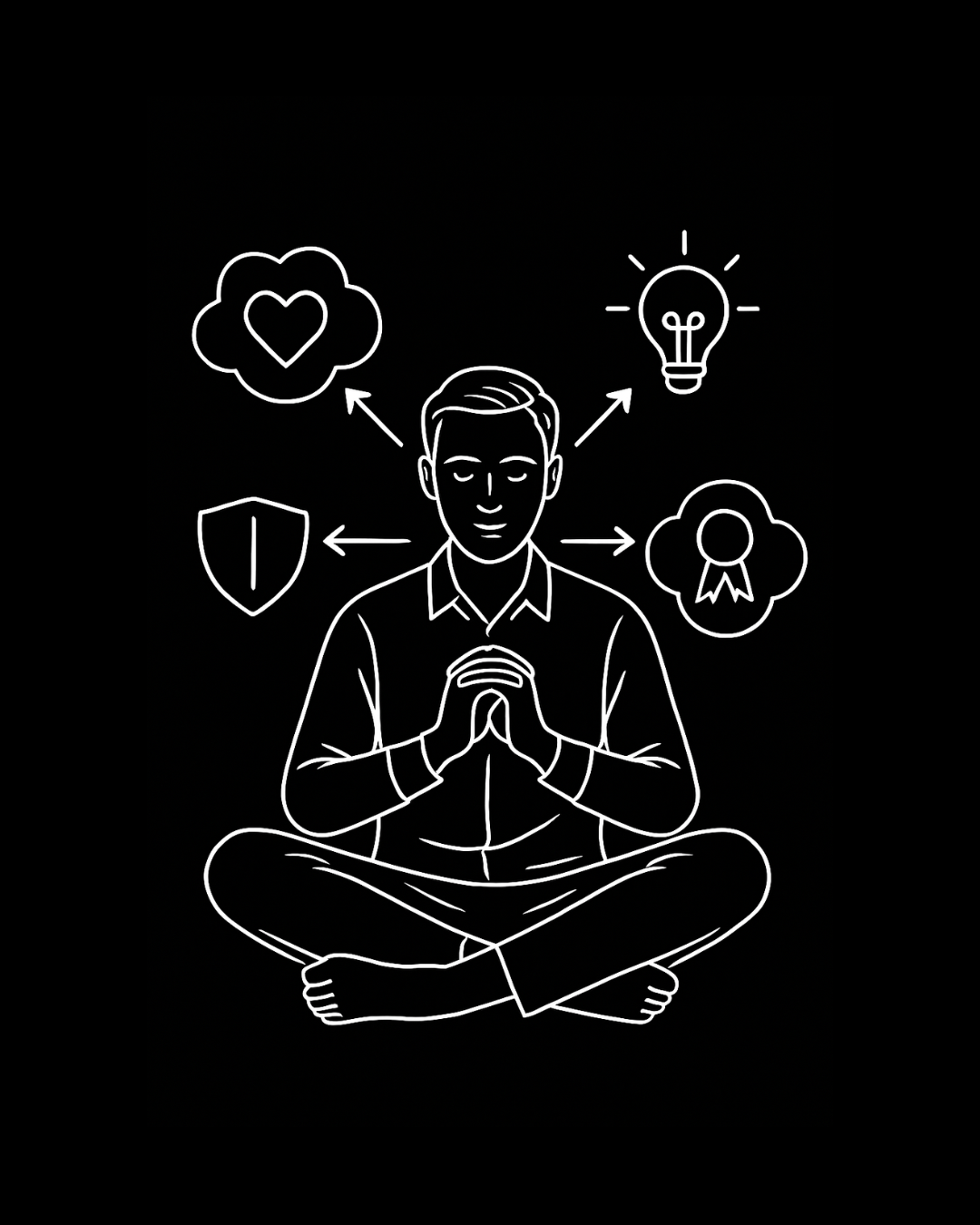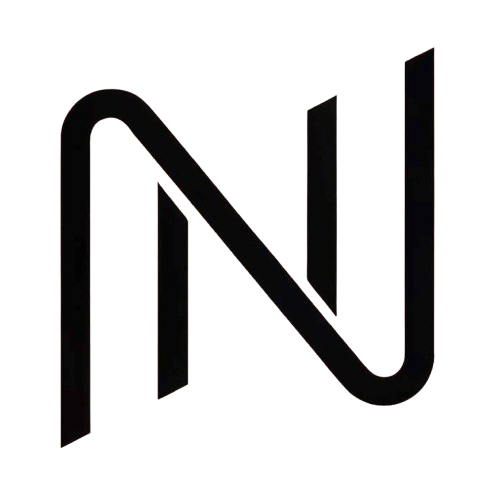Not A Subscriber?
Join a global group of ambitious readers on their quest to understand themselves, life, and business
The secret to thriving in the modern world
Every human being carries with them the same quiet set of longings: to feel safe, to be loved, to be recognized, and to live a life of meaning.
These are the fundamental needs of the human spirit.
From the moment we are born we are propelled by them and they shape our decisions in childhood and in adulthood.
And yet, from an early age, we are often taught to meet these needs outside ourselves: we pursue safety through financial security. We seek love through social approval. We chase recognition through titles, achievements, or wealth. And we search for meaning in work, status, or some formula for happiness.
But outer success only provides temporary relief. The moment we achieve what we thought would complete us, the satisfaction fades. The need reappears, and often bigger than before.
We are left restless, chasing the next promotion, the next purchase, the next life upgrade.
Life becomes a constant chase.
This is why so many people, especially those who are outwardly successful, find themselves asking: “Is this it?” at some point in their lives.
I’ve been there, and I’m sure you’ve been there too. I also see this among so many of my peers and clients. From the outside, they have built a respectable career with achievements and a lifestyle that are impressive. These elements obviously aren’t bad per se. But when pursued as a substitute for inner fulfilment, they fail.
The new epidemic
In the past, most people lived with their focus squarely on basic needs, such as food, shelter, and safety.
Higher-order needs like self-actualization were distant ideals, not realistic pursuits. Few dared to dream that big.
In this era, Maslow developed his hierarchy of needs, and he saw them as being sequential: only when the lower rungs were secure could we ascend to higher order needs.
But today, for a growing share of humanity, the basics are met, and all human needs can be pursued in parallel.
We not only see that higher ideals are possible, we also see others achieving them. And we’re told everywhere that we should be fulfilled, purposeful, and self-actualized as well.
This sounds good in theory. But in practice, most of us struggle to make this real.
We are so caught up in the day-to-day that we have fundamentally lost sight of what really matters. Our lives are consumed by deadlines, notifications, and constant obligations.
In the process, we forget the deeper questions: Who am I? Why am I here? What do I need to be at my best?
Restlessness centred around unfulfilled dreams has become the new epidemic of our age.
The problem is made bigger by the fact that this is often a secret we don’t talk about.
We feel as if something is wrong with us for not having it all figured out.
We therefore pretend to be fine, happy, successful, and in control.
But beneath the surface, every one of us carries these unfulfilled needs.
We are the first generation to really have these possibilities of doing anything. And it confuses us.
With so many options, how are we supposed to make the right choice?
This is an unprecedented moment where the horizon of human needs has expanded, but our inner capacities to meet them have not kept pace.
The turning point: inside-out living
The breakthrough comes when we realize that fulfilment must be generated from the inside. That our deepest human needs such safety, love, recognition, and meaning are not things that are bestowed upon us but rather states that we need to cultivate from within.
For example:
Safety arises when we trust our own ability to figure things out, regardless of our external circumstances
Love is felt when we learn to truly love ourselves and are able to BE love, rather than seek it through others
Recognition becomes real when we realise that we are enough the way we are
Meaning takes root when we live in alignment with values driven by the soul
This shift from the outside-in to the inside-out is radical.
It challenges everything society teaches us.
And it is the only path to sustainable fulfilment.

The four dimensions of human energy
To cultivate these needs in practice, you need to strengthen four interdependent dimensions of energy: physical, emotional, mental, and spiritual. Together, they mirror the hierarchy of human needs and create the inner architecture of fulfilment, but they are pursued in parallel.
I call this building your Inner Edge.
1. Physical energy: vitality
At the base is the body. Without physical energy, everything else crumbles. We can speak of purpose and meaning all day, but if our bodies are exhausted or weak, our capacity is limited.
Physical energy is not about chasing peak fitness alone. It is about cultivating vitality, by eating in a way that sustains, moving in a way that strengthens us, and resting in a way that restores.
It is also about taking action and making things happen.
You can activate your physical energy by moving your body daily, eating nourishing foods, and working in cycles that respect natural human rhythms.
2. Emotional energy: belonging and connection
Emotional energy is the fuel of love and belonging.
It is our ability to understand, regulate, and express feelings in a way that nurtures relationships with ourselves and others.
When emotional energy is strong, we feel supported and connected. When it is weak, we experience isolation, conflict, or emotional volatility.
You can activate your emotional energy by cultivating self-awareness, expressing your feelings honestly, and nurturing meaningful relationships through empathy and compassion.
3. Mental energy: clarity and recognition
The modern world is noisy. Attention is constantly pulled in a hundred directions. Mental energy is the ability to focus, to choose where attention goes, and to create clarity amid chaos.
This dimension is what allows us to cut through distraction, prioritize wisely, and achieve in a way that feels purposeful. When mental energy is weak, we drown in busyness without creating impact. When it is strong, we are able to work on our most important goals, using our strengths and creativity.
You can activate your mental energy by creating a reflective practice (e.g. meditation), single tasking, practicing focusing your attention, and working with your strengths.
4. Spiritual energy: Meaning and alignment
At the highest level is spiritual energy: the sense of meaning, purpose, and values that transcends ego. It is not about religion but about a broader connectedness. Spiritual energy asks: Why am I here? What truly matters? What am I serving that is greater than myself?
When spiritual energy is absent, success feels empty. When it is present, even small actions feel infused with significance. It is the ultimate source of congruence, where our outer life reflects our inner truth.
You can activate your spiritual energy by clarifying your values, aligning your actions with them, and connecting to a purpose greater than yourself.
These four energy bodies are not new (they’re found in ancient wisdom texts) and mirror not only Maslow’s needs but also the 7 chakras, values, spiral dynamics, and many other similar frameworks.
What I find fascinating is applying them to today’s modern world, combining them with modern performance science, and making them tangible and actionable.
I teach all this in my course The Inner Edge, which is now open for enrolment. Apply here if you’re interested.
Why does this matter?
To see the difference, imagine two versions of the same person.
Without a strong inner edge, they wake tired, rely on caffeine to push through their day, and they struggle with irritability and disconnection in relationships. Their mind is scattered, drowning in emails and tasks. And deep down they know that they are meant for more, but they don’t make a change.
Now contrast this with a strong inner edge: they wake energized.. They meet challenges with emotional maturity and as a result are respected and well-liked. Their mind is focused and clear, and they are productive during the day. Their actions are guided by purpose, so achievements feel deeply meaningful.
Even if their outer circumstances are similar, their inner experience is dramatically different.
Building your Inner Edge
Here are five practical steps to get going:
Awareness and assessment: Notice which of the four energy bodies (physical, emotional, mental, and spiritual) is strong and which one is lacking most. Get specific and the underlying reasons for this.
Designing your Inner Edge blueprint: Create a vision: how do I want to live physically, emotionally, mentally, spiritually? What practices, values, and rhythms will support this?
Removing inner barriers: Identify and challenge limiting beliefs, old stories, or fears that sabotage growth. Much of the work lies in unlearning.
Focus on one micro action at a time: Pick one area that you want to change and work on that for 15-30 days. Learn and adapt along the way.
Integrating new reflection rituals: Embed weekly and monthly moments of reflection where you look back on how it’s going and reflect on what you want to change. Then make a decision about whether to keep the same micro-action, modify it, or adopt a new one. Stay agile along the way.
If you want to go take this further and master your energy and performance in a small, high-impact group, apply to my next cohort here. Spots limited to 10 people.

About the author Nicolai Nielsen
I am the bestselling author of 3 books, former McKinsey Academy Associate Partner, and the founder of Potential Academy.
My mission is to raise global consciousness through education and inspiration.




